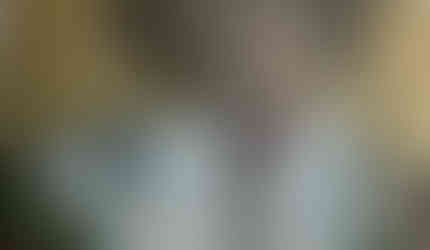Julia on "Exploring the Root of Greed: Understanding the Sin of Wanting More"
- Julia O'Sullivan of Jupigio-Artwork

- Mar 23, 2024
- 3 min read
Updated: Sep 17, 2025
My exploration of Greed, one of the Seven Deadly Sins, and its paradoxical counterpart - the Seven Heavenly Virtue of Charity, is a profound journey into the depths of human nature and morality. By meticulously planning and executing each piece, she delves into the raw essence of each sin and virtue, capturing their complexities and contradictions with raw honesty and insight.
The inclusion of the Heavenly Virtues alongside the Deadly Sins adds layers of depth and nuance to this work, highlighting the interconnectedness of these seemingly opposite forces. Through my paintings, I confront the ugly nature of both sin and virtue, challenging viewers to confront their own moral ambiguities and contradictions.
My exploration of these themes serves as a powerful reminder of the complexities of human existence and the eternal struggle between good and evil, virtue and vice. This art invites viewers to engage in introspection and reflection, prompting them to consider the ways in which these universal themes manifest in their own lives and experiences.
By capturing the essence of each sin and virtue with raw emotion and authenticity, I invite viewers to confront the darker aspects of their own nature while also embracing the potential for redemption and transcendence. My work serves as a testament to the enduring power of art to provoke thought, evoke emotion, and inspire transformation.

What is the root of Greed?
In my exploration of the root of greed and charity, I offer a stark portrayal of the corrosive nature of excessive desire and the complexities of altruism in society. I delve into the motivations behind greed and its impact on individuals and communities, contrasting it with the concept of charity and its potential pitfalls.
Greed, depicted as a relentless pursuit of wealth and status at the expense of others, is portrayed as a destructive force that erodes the soul and distorts one's sense of self-worth. This highlights how greed drives individuals to exploit others for personal gain, perpetuating inequality and undermining the fabric of society. The painting reflects the insatiable appetite for material possessions and power that consumes those driven by greed, ultimately leading to their downfall.
In contrast, charity is presented as a complex phenomenon that straddles the line between altruism and self-interest. I explore the commodification of charity and the profit-driven motives that often lurk behind philanthropic endeavours. I challenge the notion of charity as a virtuous act, questioning the true intentions of those who profit from the generosity of others. Through my art, I encourage viewers to scrutinise the transparency and accountability of charitable organisations and consider the broader implications of their donations.
Greed enters the kingdom of the wealthy, rising high above the pitiful peasants below. This gilded city is built on the bones and lives of those Greed has oppressed and enslaved. The insatiable desire for more—more wealth, more power—has become a twisted badge of honour. Greed has deluded itself into believing that accumulation defines self-worth. A grotesque little pig, Greed wallows in its riches, blind to all that is truly meaningful in the world. Its avarice knows no bounds; even Charity, reflected in the glistening oil, becomes tainted—warped into something as ugly and corrupted as Greed itself.
Greed rules over the masses with its golden touch, perpetuating a cruel illusion. The wealthy remain aloft, untouchable, while dangling the false hope of upward mobility before the powerless. Their sickest joke lies in letting the people believe they have a choice, a chance to ascend, when in truth they remain shackled by the very system that exploits them.
And yet, people follow blindly. They, too, contribute to the cycle, climbing over the bones of others in their own relentless pursuit of Greed’s promise. Each rung on the ladder seemed better than the last, each step drawing them closer to the shimmering golden city in the sky. But this endless climb only mirrors Greed’s own hollow aspirations, a futile chase to emulate those they revere.
In the shadows, the Devil watches, lustfully enthralled by Greed’s allure. He follows it down into its bubbling, oily abyss—a hell of its own making, where wealth and desire consume everything in their path.
And yet, beyond this construct of exploitation and false idols, lies the beauty of the free world. It is a realm of spiritual openness, lush and vibrant with the simplicity of natural ways. It waits patiently, offering an escape from the cycle of greed and oppression. But few turn toward it, their eyes fixed instead on the gleaming towers above—on the illusions of wealth and power, unaware of the freedom they’ve forsaken.






















Comments